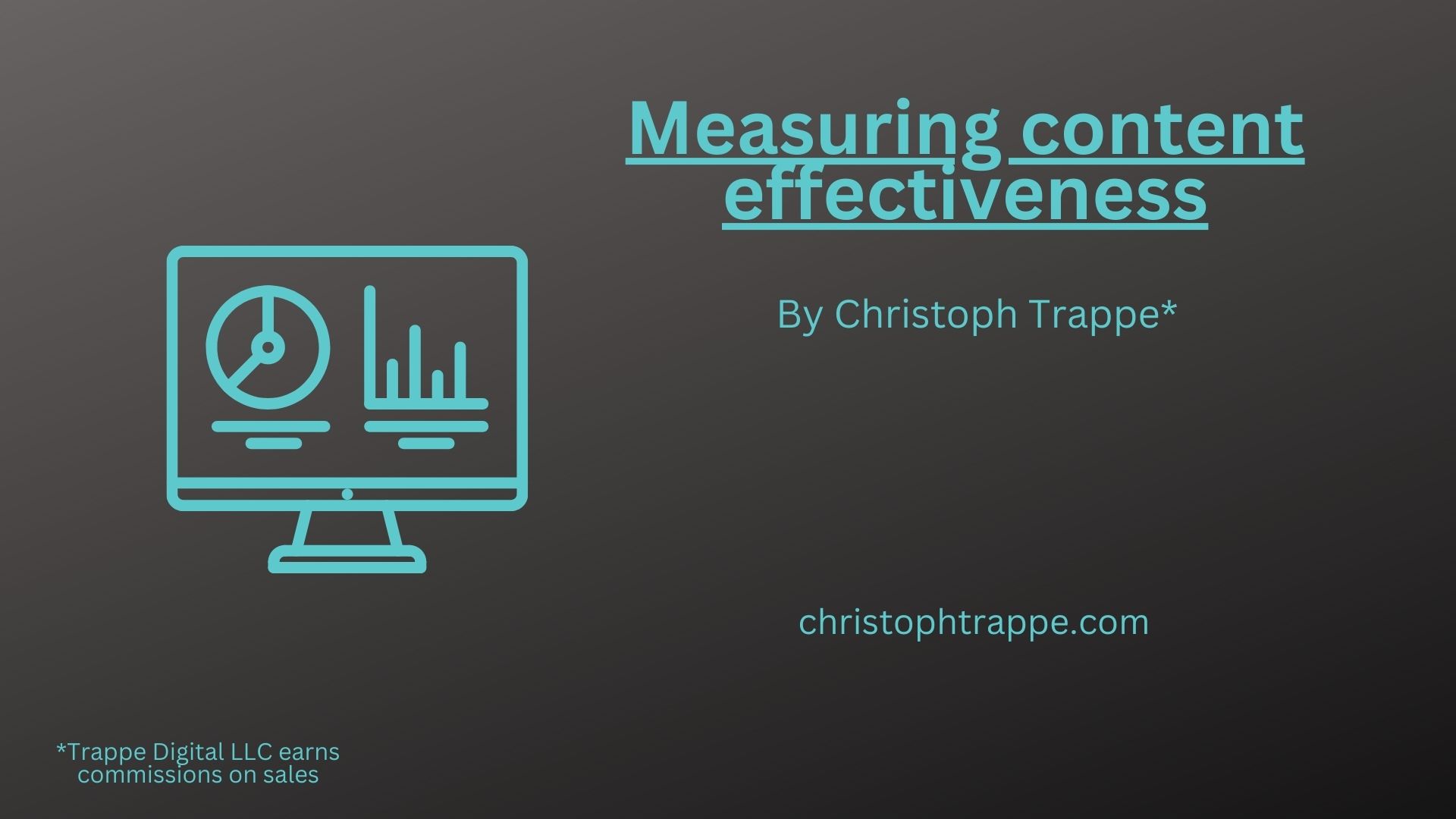Trappe Digital LLC may earn commissions from sponsored links and content. When you click and buy you also support us.
How to measure content effectiveness? We all want to know and it’s important to measure content effectiveness correctly or else the team might not realize the value of it.
Let’s dive into the topic and discuss the following:
- What’s the point of content anyway?
- Other influencing factors to content effectiveness
- How to measure content effectiveness?
What’s the point of content?
Putting it a simple way, the point of content is to make your ideal customers aware of you, engage them, and then move them through the buying cycle at their page.
There are different types of digital content that marketing teams need to create. Certainly, they need to create content that raises awarenesses. Hey, hello. We can offer value to you and here’s our thought leadership content. This might also include a branded podcast. Inviting ideal customers who have a story to share on your podcast, for example, is a great way to engage them and build a relationship. Meanwhile, they become aware of your company.
Okay, now we got their attention through our super helpful content that answered the question they were googling for. Then we have content that keeps pushing consumers further toward considering to actually buy from us. That might include the right calls to action on the website – like inline CTAs, for example.
Finally, we need content that is clear on what people can actually buy and what problem it’s solving for them. When all this works well together, the content from the other stages of the journey all plays into this stage as well. If somebody says, “we always see you out there but don’t really know what you know” is an opening to explain what the company does, but it also should be more apparent in the overall content that is being shared.
Other influencing factors to content effectiveness
We’ve all probably seen the finger pointing. Sales says content isn’t driving the right leads. Marketing says sales isn’t following up quickly enough or correctly. Others might say that content isn’t working on the website, but then nobody defines what “working” actually means. So internal finger pointing is not the way to future success. Getting on adjacent pages and understanding the different pieces is the way to success here.
Another influencing factor to content effectiveness is technological best practices. For example, if a website is already breaking all kinds of SEO best practices on the tech side, good luck getting it to rank for the otherwise good content being created.
Other issues that can affect content effectiveness are slow workflows, missing clarity on what the brand story should actually be and really any other internal politics that get in the way of creating strategic content.
Read next: Stay ahead with these SEO tools for digital marketing
How to measure content effectiveness?
To start that discussion, let’s look at what consumers actually do when content is effective: It makes them aware of the brand and guides them through the experience.
Content marketing’s role is to invite and host buyers through a TRUST JOURNEY they take at their own pace.
You have to EARN each next step:
-view
-read
-watch
-like
-follow
-comment
-subscription
-open
-scroll
-link click
-play button click
-share
-event registration
-site visit
-exploration
-all the things that happen before a HAND RAISE
Play the long game.
Earn trust with content.
Because without earning trust, you can’t earn business.
I couldn’t agree more with Ashley. There are steps consumers take with and through our content. And we have to make the steps relevant to them to keep moving and then we have to measure every step of the process to truly understand content effectiveness. It’s not just the last action, or the first one, it’s the overall experience. For sake of simplicity, let’s take the journey of a Google searcher. We’ll want to measure:
- Impressions on Google Search Engine Result Pages.
- Clicks. How many people are clicking along to your website.
- What do they do from here and what do you actually want them to do? Sign up for a newsletter, for example.
- Return visitors. Sometimes people return on their own, but if it’s the first time they’ve stumbled across your brand, they could use some reinforcement that you can be trusted. That could include remarketing to them to come back to other relevant content.
Once your content is starting to reach peak performance, you might also consider just asking during sales conversations how they’ve heard of you. They may answer that they’ve been listening to the podcast or have learned a lot through your email newsletter and finally decided to visit your website to learn more about the product.
Jesse Ringer, founder of the Method and Metric SEO Agency, discusses measurements on this episode of “The Business Storytelling Show.”
Good content works. Ongoing good content works even better. And to measure its effectiveness, we have to measure all the different areas of the customer journey.


